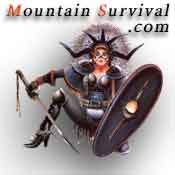

 |
 |
|
Buying A Better Sleeping Pad
|
|
Buying A Better Sleeping Pad
Half of your "good sleep" equation is a comfy pad (the other half is
your bag). Look for these 10 essentials when you buy.
1. Prioritize your needs. Rank comfort, durability, price, weight and special
features in order of their importance to you.
2. Consider the terrain. If you’re camping mostly on soft soils or pine needles,
you can get away with a thinner pad, basing your choice mainly on insulating
value, features, or price. Hard, rocky camps, and winter outings, and bad backs
demand thicker pads.
3. Think about pack load. If you’re already carrying lots of heavy gear, you’ll
want to minimize your pad’s weight and/or length. Several BACKPACKER editors
typically carry a 3/4-length pad to save ounces, then put spare clothes or a
pack under their legs at night. On the other hand, if you’ve already trimmed
pack weight, you can splurge on more camp comfort.
4. Pick a pad that’s appropriate for your weather. If you’ll be camping in
winter, layer a closed-cell pad under a self-inflater. You’ll have a warmer,
more comfortable, and more versatile arrangement than any single pad.
5. Buy for your size. Pads come in different lengths and widths. No need for a
5-foot-tall hiker to buy a 6-foot-long pad.
6. Think versatility. A shorter hiker can cut the end off a long closed-cell
foam pad to make a sit-pad.
7. Consider your sleeping style. Can you sleep through a hurricane or does the
smallest pebble under your bed keep you awake? Heavy sleepers may not need lots
of cushy padding, while light sleepers will want as much comfort as possible.
8. Plan with your partner. If you camp with a significant other (dogs don’t
count), check out pads that mate or hook together. Coupling kits are also
available.
9. Try before you buy. Unroll and inflate a self-inflating pad in the store to
check for obvious leaks or valve malfunction (the valve should turn smoothly
with little muscle power). At home, overinflate the pad with a few breaths, shut
the valve, and check it in a few days for slow leaks.
10. Measure your tent. In many tight two-person tents, full-length sleeping
pads overlap at the feet, which means you’re carrying some mattress that you
don’t need. One solution is a mummy-shaped pad; another is Cascade Designs’ Link
Rest system, which has interlocking dovetail edges for linking several pads (see
The Minimalist Bed at http://www.backpacker.com).
By Dan Nelson